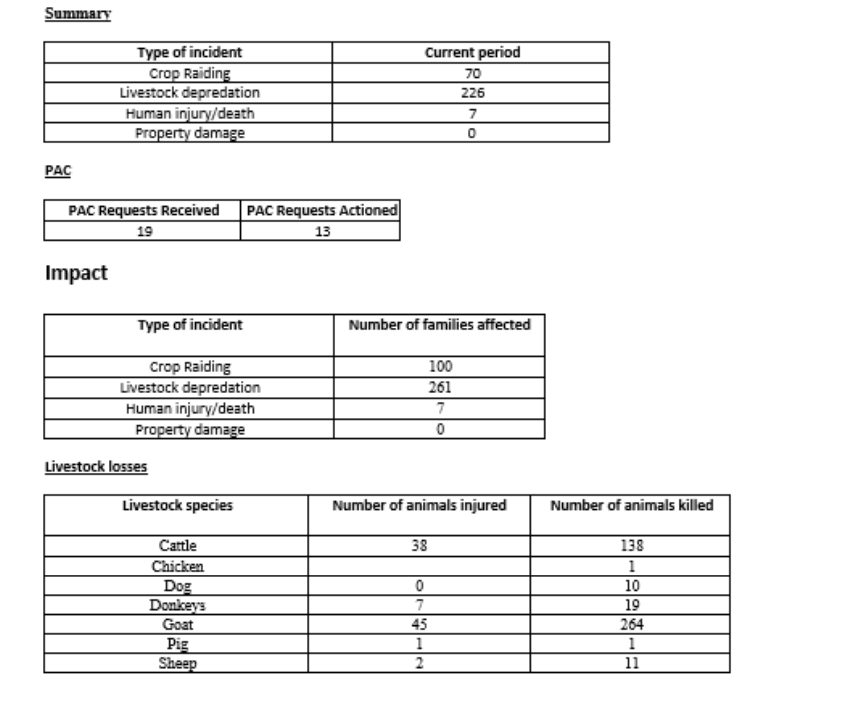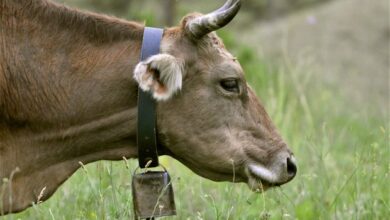Chiredzi villagers battle two predators to save their livestock

Communities on the southern edge of Zimbabwe’s Gonarezhou National Park face two types of predators: wild animals that attack their livestock, causing human-wildlife conflict (HWC), and thieves who steal their cattle and cross illegally into Mozambique.
Gonarezhou is Zimbabwe’s second largest national park, covering some 1.25 million acres, from the Save River in the north to the Mwenezi River to the south.
It is situated in a relatively remote corner of Masvingo Province, south of Chimanimani along the Mozambique border.
The park is home to 450 species of birds, 89 large mammal species, 61 small mammals, over 50 fish species, 116 identified reptile species and 34 amphibian species. Of these species, 15 are classified as vulnerable, six endangered and five as critically endangered.
Villagers living in close proximity to animals such as baboons, crocodiles, elephants, hyenas, monkeys including snakes have to deal with numerous conflicts because when these species run out of food in their natural habitats, they tend to invade farmers’ fields and livestock.
The graph below shows incidences from January 1, 2020 to January 1, 2021.

In addition to this conflict, villagers are harassed by cattle rustlers who discovered that livestock fetch better prices in Mozambique.
Cattle prices range from US$250 to US$500 when sold locally, depending on the type.
Villagers believe HWC is on the increase with animals frequenting villages more than they never did before while problem animals, such as hyenas, have become notorious for attacking livestock.
These predators have figured out a way to get around traditional enclosures and kill people’s livestock while they are grazing in the bush, or at night when left unattended in unsafe kraals.
Even baboons have devised clever ways to kill goats.
During the rainy season, elephants and monkeys ‘visit’ villages every day to raid their fields, where they grow vegetables, beans, maize, and sugar cane, said Valenta Chauke of Mafunjwa Village in Ward 15 in an interview with journalists at a tour of Gonarezhou.
Her husband, Stephen, added that baboons climbed trees and shook the branches so when fruits fell to the ground and goats went to eat those, they jumped onto them.
“This has become their technique, and crocodiles always pounce when goats move closer to the river, so we put acacia branches on the river banks to act as a barrier so that goats don’t go closer in water.” Even when crocodiles step out of the water, they go round the branches alerting goats of their presence,” he said.
Valenta added that drought was driving elephants into homesteads because forests and water sources were dwindling.
“When elephants come to homesteads, they see food and come here to drink river water,” she explained.
“Areas must be fenced to keep wildlife from leaving their territory. HWC began a long time ago, but has peaked since 2005. It is growing worse. People sleep in their fields and elephants have become more daring. They would not come close to homesteads but now come straight to our homesteads, even during daylight.”
Valenta said they used to make noise by beating drums, whipping shamboks to ward off the elephants but over time they became resistant.
“They ignore and continue eating in the fields, even when we throw burning logs at them. We also used torches, which they ignored, so we installed a floodlight at home,” she explained.
“The last time a person was killed by an elephant was in the early 1990s. Then last year, a crocodile attacked a woman, she survived but was left with a huge scar on her leg.”
Valenta stated such incidents are reported to the Chiredzi South Rural District Council, which is in charge of dealing with problem animals.
Villagers were also taught to make chilli cakes, which they burned at night to keep elephants away.
“Chilli cakes smell like used oil and are more effective in chasing elephants,” she said.
The Chauke family had all of their cattle stolen.
“We had 14 cows. Seven were stolen in 2019, and seven more were stolen in December 2020. That’s when we stopped cattle ranching. We’re no longer willing to buy cattle,” Stephen explained, while Valenta claimed, “cattle rustling is worse than wildlife. The robbers move the cattle to Mozambique.”
Gonarezhou Conservation Trust (GTC) Community Liaison Officer, Herbet Pikela explained that since Mafunjwa was a communal area, it was under the Communal Areas Management Programme for Indigenous Resource (CAMPFIRE) model managed by the RDC .
“The RDC contracts hunters to control the animals but when they fail, we come to assist,” he said.
Headman Ledson Makondo of Muhlanguleni Village, Ward 10, said villagers had to practice active herding and build ‘fortified’ kraals to protect livestock from hyena attacks.
“I’m a cattle farmer with over 50 cattle. I bought logs for R10 each and transported them here to build my structure,” he explained.
However, the headman claimed other villagers had failed to construct these structures despite repeated encouragement to do so in order to protect their cattle.
“A hyena cannot enter this kraal because the logs are placed closely together, leaving no gaps, unlike the old kraal structures where a hyena could easily grab a cow and eat it,” he said.
Five cows and a donkey were eaten by hyenas in the last week, according to Makondo.
“We also encourage villagers to have vigilant herders watch over livestock during the day, and then when it gets dark, cattle are protected in these fortified kraals,” he explained.
Ward 10 Councillor, Leonard Makondo, agreed that active herding was necessary.
“Cattle can graze during the day, but around 3 to 4 pm, herders must drive all the cattle into kraals,” he explained, noting that hyenas normally do not kill during the day, but attack when it is cloudy or dark.
“They wait for the night,” he explained, adding that the fortified kraals had helped many farmers reduce livestock mortality.
“If they cannot afford ironwood timber, some villagers use poles, fences, and local mopani timber.”
Makondo, who is also the vice chairman of Chiredzi RDC, said they held workshops for villagers on how to care for their livestock.
“Those who have problems are families who send young children to herd cattle, because children don’t notice when livestock goes missing,” he explained.
The councillor stated if HWC cases were reported, the RDC had put in place mechanisms to make sure safari operators operating at that particular concession attended to the problem animals as soon as possible.
“We have no problems in areas where there is CAMPFIRE. For areas without CAMPFIRE, we rely on the Zimbabwe Parks and Wildlife Management Authority to assist,” he explained.
According to the GCT, Human Wildlife Data Coordinator, Elice Dheimani, from 2017 to 2021 there were 1 348 incidents of problem animals and other respective numbers of incidents around the park.

To combat HWC, GTC Monitoring and Evaluation Officer Rumbidzai Magwiro stated that once reports are received, their rangers will capture and relocate problem animals.
“We also constantly review the HWC programme, have community member participation and capacity in wildlife chase, communicate these conflict issues, record incidences, and do data analysis to understand conflict.”
“We also do lethal animal control,” she added.
On transboundary crime, such as cattle rustling, GTC Senior Area Manager, Evious Mpofu, stated that due to their manpower, they were able to apprehend some smugglers.
“We work with communities including the police and military to control transboundary crime. I cannot say it’s much of a challenge but sometimes we do have people from Mozambique attempting to do cattle rustling,” he said.
“We have already intercepted a number of them trying to drive cattle through the park to Mozambique.”
The cattle rustling, according to the Community Liaison Officer, was committed by unknown members.
“I can’t say whether they’re Mozambicans, South Africans, or Zimbabweans, but some of them could be locals stealing cattle and selling them in Mozambique. Cattle rustling is a challenge at this point, and I can’t say it’s coming from Mozambique,” he explained.
“However, we do know that cattle are driven through the park to Mozambique. They fetch a better price. Some locals work with Mozambicans in selling, that’s what we can say.”
Mpofu also stated that as a result of collaboration, crime has decreased due to increased patrols..
“We have 207 rangers, whose coverage and cooperation with communities is good. Communities know if there is a challenge they can contact us then we follow up,” he said.
“Smuggling used to be a problem a long time ago but now because we patrol every inch of the park we stopped smuggling completely. In the past people would just use the park to smuggle goods but now it’s not easy.”






